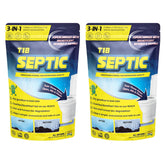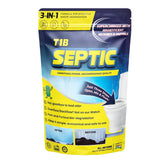How to Prevent Septic Tank Overflow and Costly Repairs
Septic tank problems can be a homeowner’s nightmare. Overflowing septic tanks lead to foul odors, property damage, and expensive repairs. The good news? You can prevent these issues with simple, proactive steps. In this blog, we’ll explore how you can maintain your septic system and avoid unnecessary costs.
Understanding the Causes of Septic Tank Overflow
Before we dive into prevention, it’s important to understand why septic tanks overflow:
- Lack of Regular Maintenance – A septic tank needs routine cleaning to remove sludge buildup.
- Excessive Water Usage – Overloading the tank with too much water can prevent proper waste breakdown.
- Using Harsh Chemicals – Bleach, drain cleaners, and antibacterial soaps kill essential bacteria that break down waste.
- Flushing Non-Biodegradable Items – Wipes, sanitary products, and even paper towels can clog the system.
- Poor Drain Field Condition – A blocked or compacted drain field prevents wastewater from properly filtering.
How to Prevent Septic Tank Overflow
1. Schedule Regular Pumping & Maintenance
Your septic tank should be inspected and pumped every 2-3 years (or as per usage levels). Regular pumping prevents sludge buildup, which can clog the system and lead to overflow.
2. Use a Microbial Septic Tank Cleaner
Chemical cleaners can harm your septic system, while microbial septic tank cleaners introduce beneficial bacteria that break down waste naturally. Products like T1B Septic help maintain a healthy balance, reducing sludge accumulation and preventing overflow.
3. Conserve Water to Reduce Tank Load
High water usage can flood your septic tank, reducing its efficiency. Follow these tips to conserve water:
✔️ Fix leaky faucets and toilets.
✔️ Spread out laundry loads instead of doing them all at once.
✔️ Install low-flow toilets and showerheads.
✔️ Avoid excessive water dumping, like draining hot tubs into the system.
4. Avoid Flushing Non-Degradable Waste
The only things that should go into your septic system are human waste and toilet paper. Avoid flushing:
❌ Wet wipes (even “flushable” ones)
❌ Sanitary napkins and diapers
❌ Cooking grease and oil
❌ Medications and chemical cleaners
5. Maintain a Healthy Drain Field
The drain field is where wastewater gets filtered back into the soil. If it’s blocked, it can cause an overflow. Follow these precautions:
✔️ Never park vehicles or place heavy objects on the drain field.
✔️ Do not plant trees or deep-rooted plants nearby, as roots can damage the pipes.
✔️ Ensure rainwater drainage doesn’t flood the area.
6. Watch for Warning Signs
Early detection of septic problems can save you from costly repairs. Watch out for:
⚠️ Slow-draining sinks and toilets
⚠️ Gurgling sounds in plumbing
⚠️ Unpleasant odors near the septic tank
⚠️ Water pooling in the yard
⚠️ Lush, green grass over the drain field (a sign of excessive moisture)
The Cost of Neglect: Why Prevention is Cheaper
Ignoring septic maintenance can lead to severe consequences, such as:
❌ Tank replacement costing ₹50,000–₹1,00,000+
❌ Drain field repairs costing ₹30,000–₹80,000
❌ Emergency septic pumping fees are higher than regular maintenance costs
By following regular maintenance practices and using a microbial septic tank cleaner, you can extend the life of your septic system and avoid unexpected expenses.
Conclusion
Preventing septic tank overflow isn’t complicated—it’s about routine care, using natural cleaners, and being mindful of what goes into the system. With simple steps, you can keep your septic tank in top shape and avoid costly repairs.
Need a reliable septic tank cleaner? Try T1B Septic – the natural and effective solution to keep your system running smoothly.








Leave a comment
Please note, comments need to be approved before they are published.